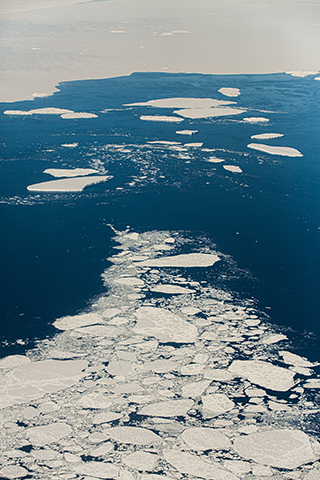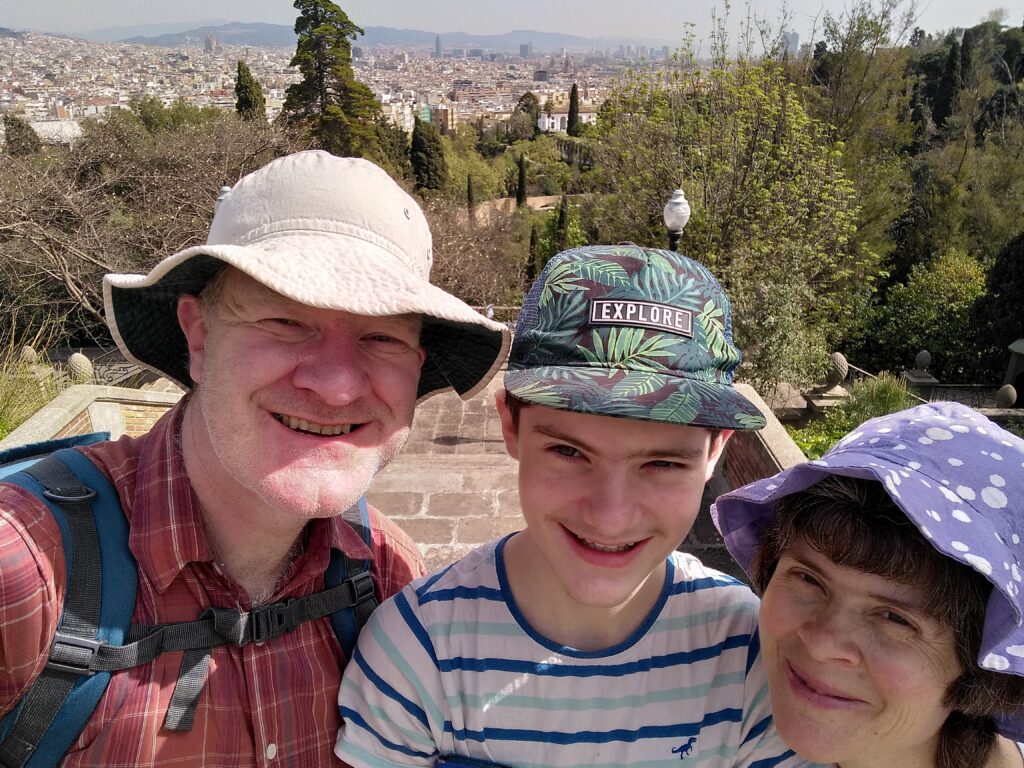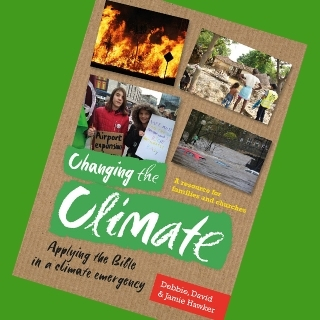In the light of the recent record-breaking temperatures, our article this week is an edited extract from Changing the Climate: Applying the Bible in a climate emergency by the Hawker family. As the double meaning of the title indicates, the book both explores how human activity has changed the climate in damaging ways and suggests the urgent changes we can make right now to help reverse the damage.
24 July 2022
Planet earth in crisis
Planet earth is in crisis. Earth will survive. Humans, or at least our way of life, may not.
If we carry on as we are doing, we are on course for an average temperature rise of over 3ºC by 2100. That might not sound like much, but it would be catastrophic, because this is an average that includes greater temperature rises where it matters. It would be impossible to live in large parts of the world. Many millions of people would die, if life survives at all. Crop yields would fall, and those who survive would fight over the remaining land and food, leading to many more deaths. That is the forecast for less than 80 years from now. Children alive today are facing a traumatic future if we do not turn this around.
Climate change attacks the building blocks we need to survive – air, water, food, health and security. Diseases, including pandemics, increase. We are all at risk. This is a crisis of choices that we have made and keep on making: greed, selfishness, waste, destruction. The climate is changing, plants and animals are dying, and we are heading for a dangerous future. As David Attenborough said, ‘If we don’t take action, the collapse of our civilisations and the extinction of much of the natural world is on the horizon.’
‘Children alive today are facing a traumatic future if we do not turn this around.’
Think of a child you know. Think about how old they will be in 2100, and any children they might have had. Think about the world they might be living in then. Will you do what you can to change the climate and stop this disaster? It helps to have a basic understanding of the science, which is one of our aims in writing Changing the Climate.
Understanding climate change
First of all, weather is not the same as climate. Weather changes day to day and year to year. Climate is what the weather is generally like when it is averaged over years. We can’t observe climate change in any one year. But when we measure the changes over decades, we can see that, overall, the temperature is going up and up.
The earth is about 1ºC hotter than it was 150 years ago, when the Industrial Revolution really took off.
1ºC might not sound like much, but it is an average – a way of summarising a lot of bigger changes, such as:
- much greater temperature rises near the poles (average 3ºC or more)
- ice-free Arctic summers
- longer droughts in Africa
- more extreme temperatures
- greater warming on land than at sea
- long, hot summers in Europe, sometimes hot enough to kill thousands
- dangerous heatwaves in cities.
‘This is a crisis of choices that we have made and keep on making: greed, selfishness, waste, destruction.’
It’s shocking to realise that ice is melting so fast that sea levels are rising and won’t stop rising for centuries, even if the human race died out now.
If the world leaves serious action on climate change longer, we will have to take even more drastic steps to reduce carbon emissions, or rely on technology that hasn’t been developed yet and has its own risks. All the problems of climate change we have described will get much worse, in part because of so-called ‘feedback loops’.
What are feedback loops?
Feedback loops occur where one problem causes a second problem that makes the first problem worse and makes the planet warm faster. Here are three examples.
Wildfires: a warmer climate dries out vegetation and makes it harder to stop wildfires; these fires then add more greenhouse gases to the atmosphere.
Melting ice: ice reflects 90% of sunlight back out into space, keeping the earth cooler. But as ice melts, white snow turns to clear water, which absorbs 94% of the heat from the sun (that is why it looks blue) instead of reflecting it away. So the sea warms, and so more water evaporates into the air as water vapour. Water vapour is naturally in the air but also acts as a greenhouse gas, so more water vapour keeps more heat in.
Permafrost: this is the name for land near the ice caps which has been permanently frozen. As permafrost begins to melt, methane underneath it will be released into the air and speed up global warming, which in turn will melt more ice and raise sea levels by metres, not centimetres. There are signs that this has already begun.

If we carry on as we did up to the end of 2019, we are on course for a 3–4ºC rise by 2100. If we follow the path of highest emissions, we could reach 4ºC by 2070 and 7ºC by 2100. These are average temperatures, which summarise much greater changes. The temperature rise will be even greater if feedback loops operate, like the release of methane from permafrost. A rise of 3ºC or above is so catastrophic it could mean it would be impossible to live in large parts of the world, and many millions of people would die. Those who survive could be fighting over land and food in the northern parts of Russia, Canada and Scandinavia.
Faith communities and behaviour change
Our planet has survived great crises before. The Black Death possibly killed more than half of Europe. Genesis 7 tells of a flood which wiped out most of life on earth. Life on earth survived. Life as we know it may not. Carrying on as we are would be like sentencing millions of people to premature death.
We can’t stop all changes to the climate and the environment. But we can slow them down. The British government’s former chief scientific adviser Lord May suggested that faith communities could do what scientists and politicians could not, and motivate people to change their behaviour. Have we succeeded?
‘Faith communities could do what scientists and politicians could not, and motivate people to change their behaviour.‘
In 2020, the world changed many things quickly to protect people from Covid-19. What if we treated that as a warning of worse to come or a practice run for dealing with it?
The Intergovernmental Panel on Climate Change has said we need to make drastic changes to the way we live. What are you going to do to change the climate?

The Hawkers are a Christian family who are taking action for climate justice. Psychologists Debbie and David Hawker work with Tearfund and mission organisations. Their teenage son Jamie also campaigns on climate issues and was recently honoured with The Diana Award for ‘going above and beyond in his daily life to create and sustain positive change’.

This workbook shows how the Bible is relevant to environmentalism, and how we can all play our part in limiting the negative effects of climate change. Each of the twelve chapters looks at a particular Bible passage, connects it with climate action, poses questions and suggests practical steps that can be taken.
Prayer for the planet
God of justice and compassion,
we cry to you for the future of planet Earth.
We repent with tears
for our failure to manage its resources fairly
and for our short-sighted greed and selfishness.
Stir up in us and our leaders at this time,
a new determination to act
for the good of the poorest among us,
and for the blessing of all creation.
Martyn Payne

Messy Church Goes Wild is the movement within Messy Church which aims to encourage Messy Churches to meet God outdoors, love the natural world, experience a sense of awe and wonder there, and to be more eco-aware in all we do, both inside and out, as gathered and dispersed church, for the good of the planet. We have two free roadshows coming up for Messy Church leaders of all ages:*
Messy Church leaders are welcome to bring their families. Please bring appropriate clothing – we will be outside whatever the weather!
*All under-18s must be accompanied by an adult
